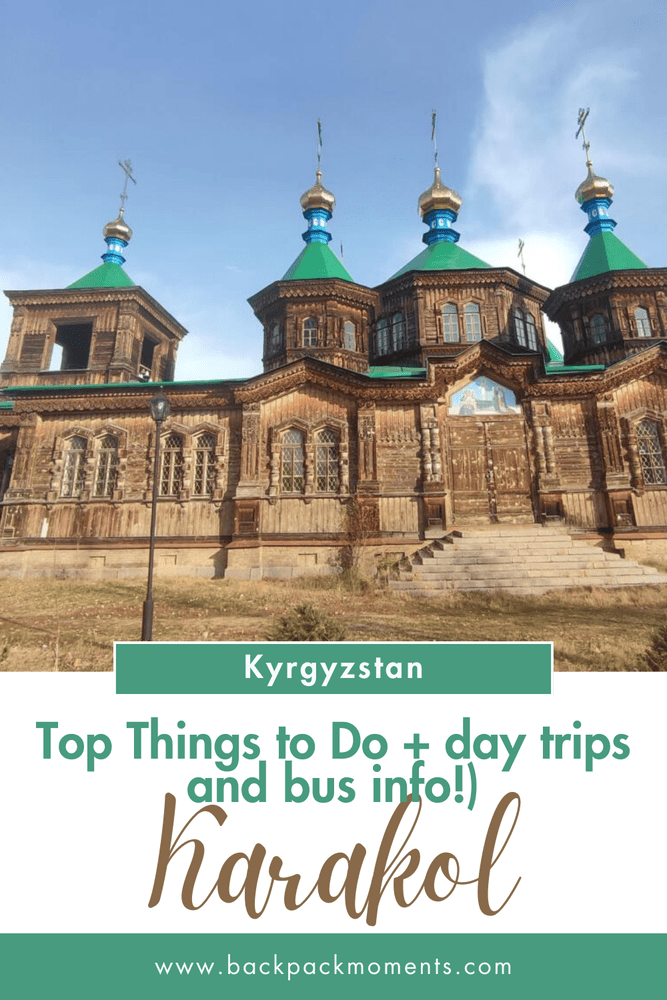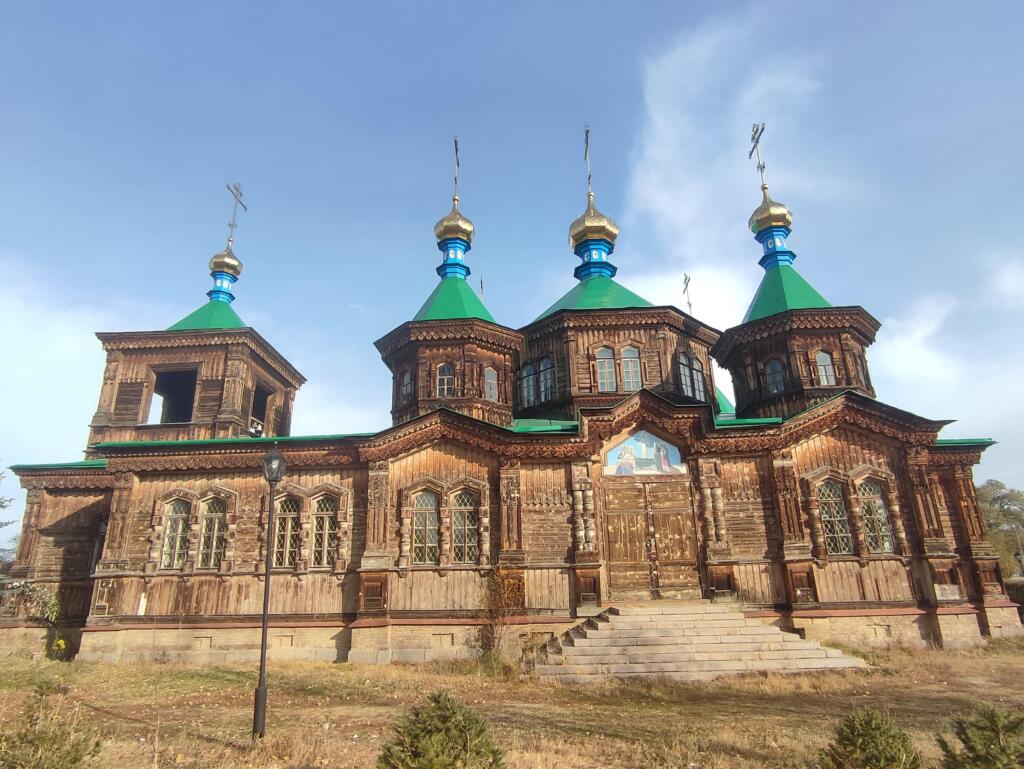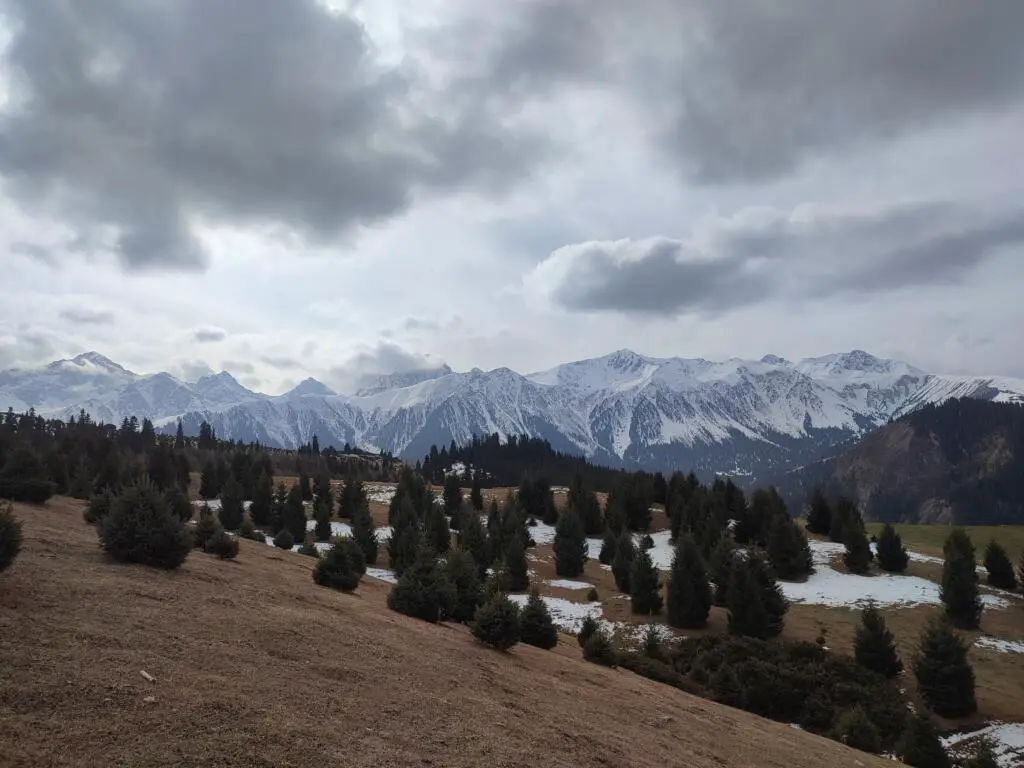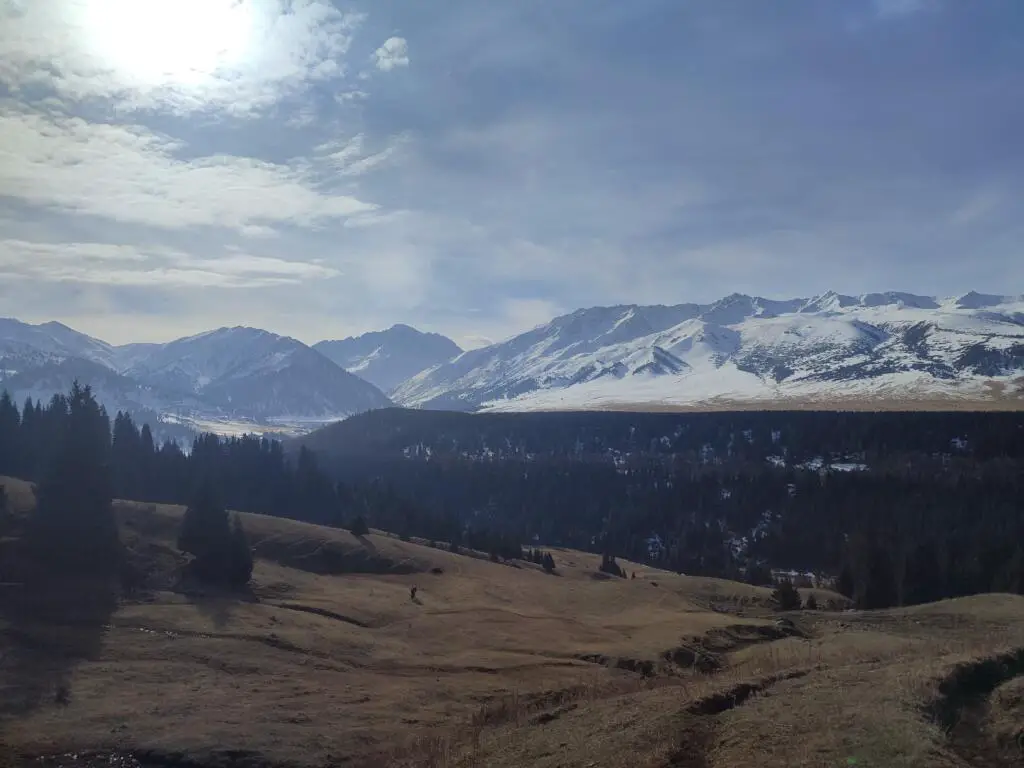13 Best Things to Do in Karakol (+ day trips and bus info!)
This post may contain affiliate links. If you make a purchase using one of these links, I may receive a small reward at no extra cost to you. See my Disclosure Policy for more information.
Karakol is a charming little town in the eastern part of Kyrgyzstan often regarded as its adventure capital.
But it could also be used as a relaxing getaway. Really, it’s a mixture of adrenaline and serotonin for the mind and body.
I mean, you can ski in the winter, go hiking in the summer, or sit back and enjoy hot mineral springs, well, any time!
I loved my 4 days in Karakol because of all the breathtaking nature and views, the hot pools, the museums, and the cuisine. Let me show you some of the best things to do there!
Karakol is part of this extensive 14-day Kyrgyzstan Itinerary!
1. Explore the Karakol Museum
Karakol Museum showcases the history and culture of the town and the surrounding region. It’s an excellent opportunity to learn about the local traditions and customs.
There’s a section on archeological finds from the Issyk Kul region, a flora and fauna section, and a permanent exposition with photos of Ella Maillart, a Swiss adventurer who loved the region of Karakol.
The museum is open daily from 9 am to 5 pm. The ticket costs 100 KGS (1.2$).
2. Visit the Dungan Mosque
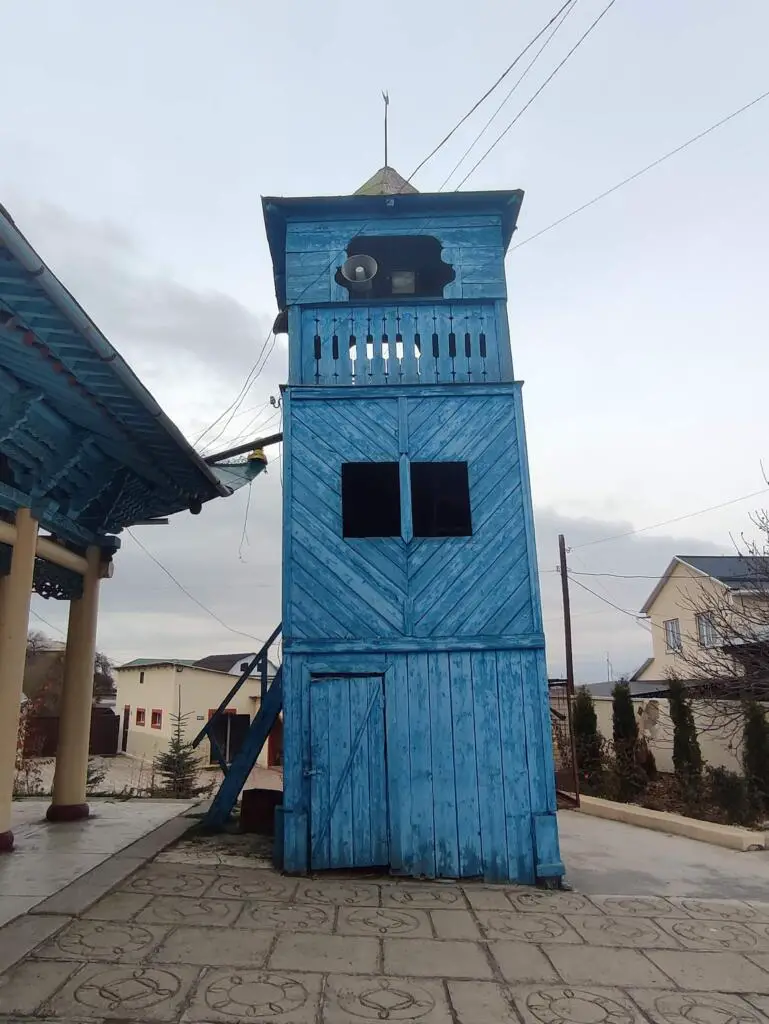
The Dungan Mosque was built in the 20th century by Chinese Muslims who fled to Kyrgyzstan.
It combines traditional Chinese and Central Asian styles, making it quite different as far as mosques go. I mean, how often do you get to see a Chinese mosque in Central Asia?
It’s so unique, I claim you won’t be able to find something similar anywhere else in the world! (ok, perhaps you may, but you get the point)
3. Visit the Russian Orthodox Church
The Russian Orthodox Church (its actual name is the Holy Trinity Cathedral) was built in the 19th century and is one of the oldest buildings in Karakol.
It’s a beautiful example of Russian Orthodox architecture and is open to visitors. The interior of the church is breathtaking, with beautiful murals and stained-glass windows.
It started as a small brick chapel but was destroyed in an earthquake in 1889. It was rebuilt over 6 years as the marvelous wooden church you can still see today.
4. Stroll in Victory Park, Afghan Park, and Pushkin Park
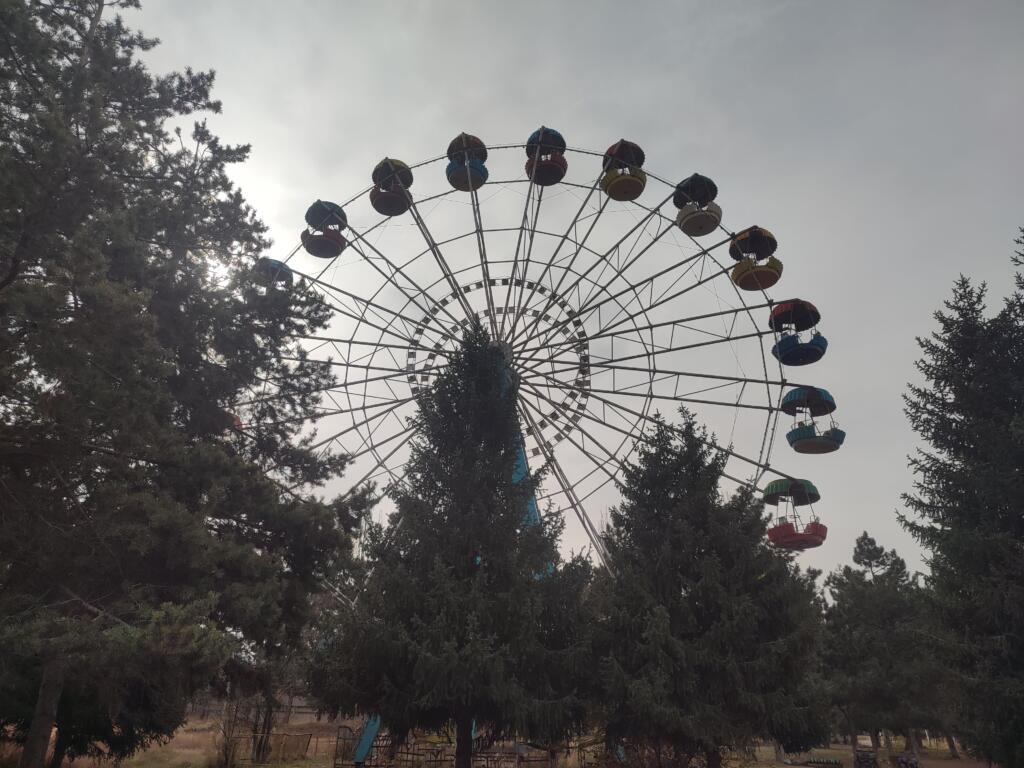
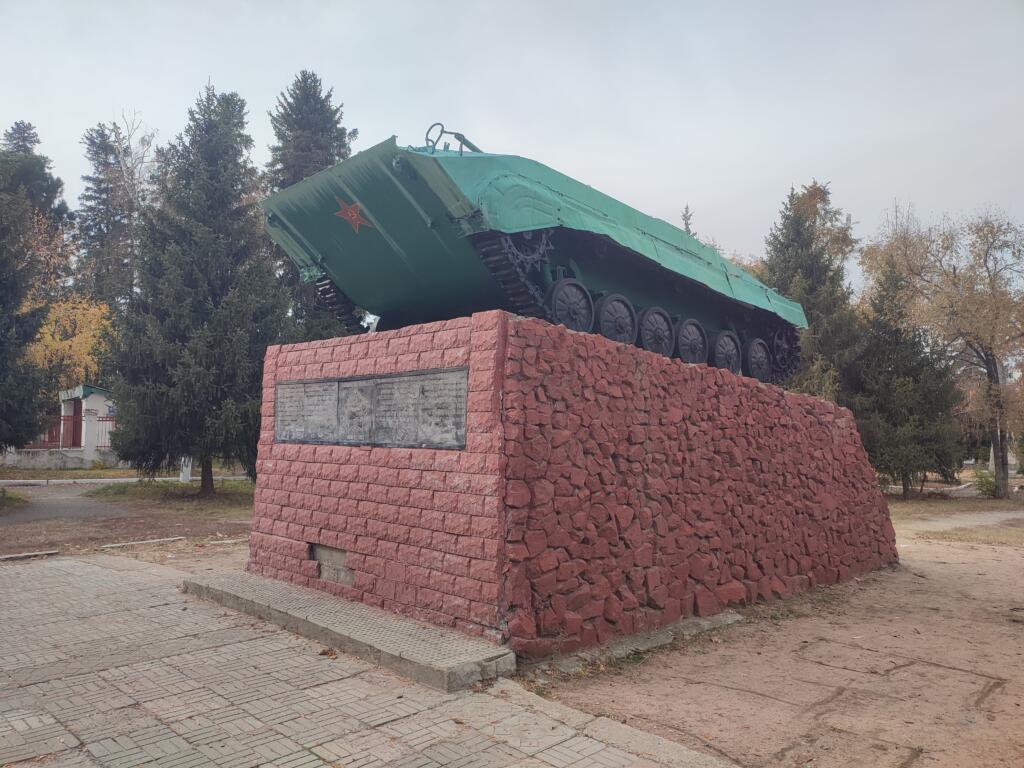
Post-Soviet cities still have their Soviet-style parks. It’s quite bizarre – they’re just stuck in time with their statues, monuments, sometimes tanks, and artillery weapons, sometimes abandoned amusement parks with deteriorating Ferris wheels.
These three parks in Karakol offer just that: a blast from the past. Statues of military leaders, monuments from WW1 and WW2, a Ferris wheel that may or may not be operational, tanks on pedestals, etc.
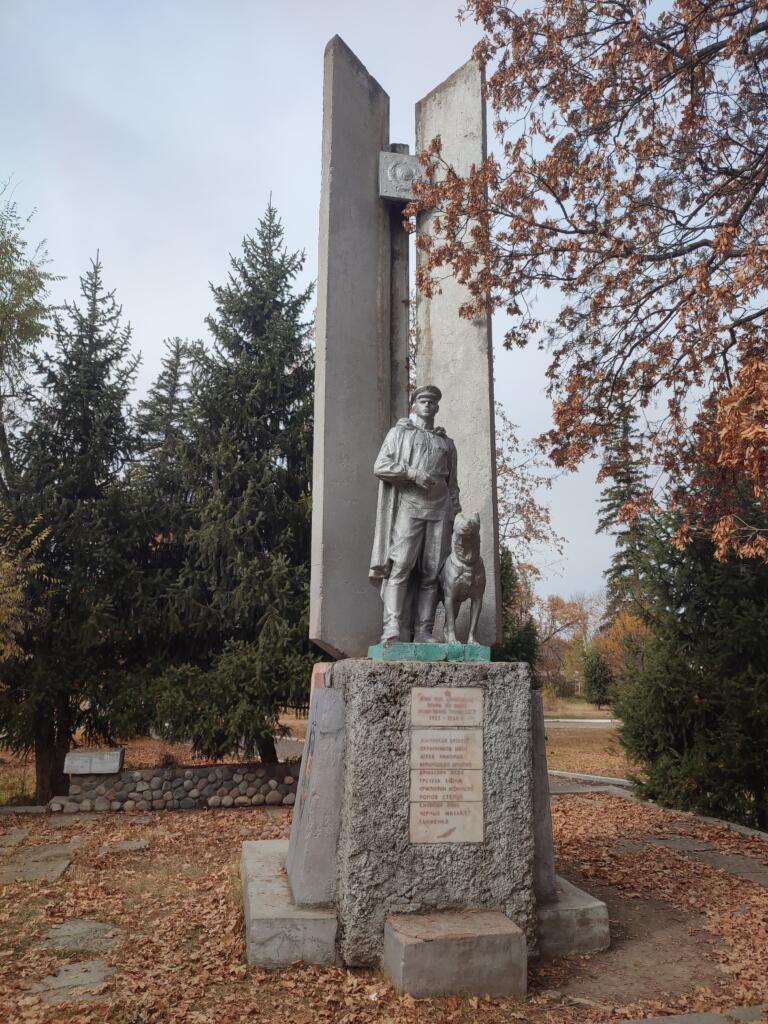
5. Try the local cuisine
Karakol is known for its delicious food, including lagman (noodle soup), manty (steamed dumplings), and beshbarmak (meat and noodle dish).
You can try these dishes at local restaurants or the Karakol bazaar. Make sure to try the local fermented drink called “kymyz” (mare’s milk).
To be fair, once you leave Bishkek, this is all you’ll be eating anyway. Lagman, manty, lagman, manti… occasionally you’ll see a new dish only to try it and realize it’s just a variation of lagman.

Beshbarmak for example (which means “five fingers”, because you’re supposed to eat it with fingers) is practically lagman with meat. It’s the nomads’ way of life so don’t expect Michelin stars.
6. Visit the Karakol Animal Market
Karakol Animal Market is a popular attraction where locals come to buy and sell livestock. It’s only on Sundays and ends before lunch, usually as early as 10:00.
You can see various animals such as cows, horses, and sheep being herded around, haggled over, bought, and sold. It’s a very authentic cultural experience specific to Karakol.
It’s also called Mal Bazaar and is located in the north end of town. This is the location.
Bus 101 will take you within 5 mins of walking to the market (10 KGS / 0.11 EUR). Otherwise, you can walk the whole 40 minutes from the center of Karakol or take a taxi for ~80 KGS / 0.85 EUR.
7. Do a Multi-Day Hike to the Ala-Kul Lake
Hiking to Ala-Kul Lake is the most popular multi-day trek for most visitors. The hike takes around two to three days to complete, but the stunning scenery makes it all worth it.
The standard trek starts just south of Karakol. Take bus 101 to the entrance of the national park. There’s a 250 KGS / 2.6 EUR entrance fee for the national park.
The path then goes up, up, up to the Ala-Kul Lake and descends the other way towards Altyn-Arashan.
If you do it in the high summer season, you don’t even need a tent or camping gear. Of course, take warm clothes – it gets cold high in the mountains even in the winter. You can easily find accommodation in Yurt Camps on the way.
If you feel uneasy about that, book in advance through your hostel or online. If you still feel uneasy, book this private 4-day trek. It’s a bit pricy but it’s worth it for those who want everything planned out and the complete safety of knowledgeable guides.
8. Hike to Ak Suu Arboretum
This is an easy one-day trek of about 13 km that takes you through beautiful alpine meadows and spectacular views of the Tien Shan Mountains. You can do this by yourself without the need for a guide!
The trek starts from the same place as the trek towards Ala-Kul Lake (just south of Karakol through the National Park entrance) but goes down towards Ak Suu before the higher altitude portion.
From Ak Suu, you can get back to Karakol with the regular 350 bus or hitchhiking.
All routes and trails are on Maps.me and it’s easy to do this trek on your own.
9. Hike around Jyrgalan
Thanks to USAID’s help in developing the region, Jyrgalan has transformed from a god-forgotten village in the middle of nowhere to a very popular skiing and adventure tourism destination.
You will have plenty of hiking options if you go in the summer and skiing trails if you go in the winter.
To get there take Marshurtka 331 from the Big Bazaar bus station at 8:30, 13:30, and 17:30. If you’re doing a one-day trip, then obviously take the early morning one. The journey takes 1.5 hours and costs 90 KGS / 0.95 EUR.
Do note that accommodation is quite a bit more expensive than in Karakol. But it’s an experience to stay there!
- Want a homestay? The best one in Jyrgalan is Rahat Guesthouse (private room)
- Want a dorm? Stay at Mine Hostel Dzhergalan
- Want to experience sleeping at a Yurt Camp? Look no further than Jyrgalan Yurt Lodge!
Apart from skiing, multi-day trekking, and adventure sports, you may also visit the Turnaluu Lake and Kok-bel Waterfall.
Both can be combined in a 6-7 hour day trip from Karakol. The hiking trails to both the lake and the waterfall are on Maps.me.
If you’re not spending the night in Jyrgalan, make sure to return to the village to take the last marshrutka back to Karakol at 16:30!
10. Visit the Jeti-Oguz Canyon and Count the Seven Bulls
Jeti-Oguz Canyon is famous for its red rock formations that resemble seven bulls. I am not sure I can see the bulls, but there are definitely 7 massive rocks (pictured above).
You can hike or horse-ride through the canyon and enjoy the stunning scenery. It’s a great place to take some Instagram-worthy photos too.
To get there, take bus 371 from Karakol. It takes you to Jeti-Oguz Resort from where you can start your trek. To get back to Karakol you might have to hitchhike or ask a local to call a taxi for you.
A more convenient way to go there is to partner up with others from the hostel and take a shared taxi. Arrange with the taxi driver to come pick you up after you finish the trek. It should be around 200 KGS / 2.1 EUR per person one way.
11. Relax at the hot springs
Karakol has several hot springs located nearby that are believed to have healing properties. It’s a great way to relax and rejuvenate after a long day of hiking or sightseeing. The hot springs are also a popular attraction among locals who make up most of the clientele.
The easiest to get to is the Ak Suu Kench hot springs. To get there take Marshrutka 350 from Karakol and ask the driver to stop at the Ak Suu Resort or the Hot Springs.
Pro tip: For all of the Former Soviet Union (-Stan countries, Caucasus, etc) download 2GIS – a Google Maps alternative that finds public transport routes even offline!
Entrance to the Hot Springs costs 250 KGS / 2.64 EUR and allows you to relax in three pools of different temperatures for an hour – it’s more than enough to feel like a cooked potato afterwards. Bliss!
12. Explore the Issyk-Kul Lake and the Przhewalski Museum
Located near Karakol, the Issyk-Kul Lake is the second-largest alpine lake in the world. You can swim, boat, or simply relax on the beach. The lake is surrounded by stunning mountains and offers a tranquil setting for a day trip.
Make sure to visit the Przhewalski Museum. This Russian explorer and adventurer was a big deal. He was so big of a deal that Karakol’s former name was indeed Przhewalski!
He traveled through all of Central Asia as far east as Mongolia and Tibet and documented his adventures for the benefit of geography and biology. There’s still a place, now administratively a part of Karakol, called Pristan’-Przheval’sk.
To get there, take a marshrutka with this exact name: Pristan’-Przheval’sk. It costs 20 KGS / 0.2 EUR.
The Museum costs 100 KGS / 1.05 EUR to enter.
13. Marvel inside Skazka Canyon
This is another marvelous place to visit in the region of Karakol. Skazka Canyon is a geological wonder with peculiar stone shapes.
The name Skazka, which means fairy tale in Russian, perfectly describes the otherworldly landscape of this natural wonder.
As you enter the canyon, you’ll be greeted by towering red sandstone formations that seem to have been sculpted by the hands of giants.
The rocks are twisted and contorted into fantastic shapes that look like castles, animals, and mythical creatures. You’ll feel like you’ve stepped into a dream world or a scene from a fantasy movie. Fairy tale indeed.
To get there from Karakol take Marshrutka 310 or 315 from the Southern bus station towards Bokonbaevo and get off at the sign for the Skazka canyon (ask the driver). From there you can walk to the Skazka Canyon (~30 minutes).
You can explore the canyon on a day trip and come back to Karakol the same day. Just don’t wait until too late to go back or you may get stranded!
How to get to Karakol from Bishkek
To get to Karakol take a minibus from Bishkek that costs 500 KGS / 5.3 EUR and takes around 6 hours. The minibuses depart regularly from the Western Bus Station in Bishkek.
The minibus leaves once it’s full (no set time, but it goes in the morning) and passes through Cholpon-Ata.
Make sure to sit on the right side of the minibus to enjoy the spectacular scenery of Lake Issyk Kul.
Alternatively, you could choose to take a shared taxi which will cost you around 700 KGS. It’s a bit more comfortable, but won’t be much faster than the 6 hours by minibus.
Read my full guide about traveling between Bishkek and Karakol.
Where to stay in Karakol
There are two cheap hostels in Karakol on Hostelworld – Snow Leopard and Karakol Based Hostel. I stayed in the latter and it was very, very nice.
Awesome atmosphere, knowledgable and helpful host, cozy rooms. Both go for 400-700 KGS (4.5-8 USD) per night depending on the season.
There are a few more budget options on Booking.com, but not any cheaper and I argue not better either. There are plenty of more expensive options – hotels, homestays, etc. too.

